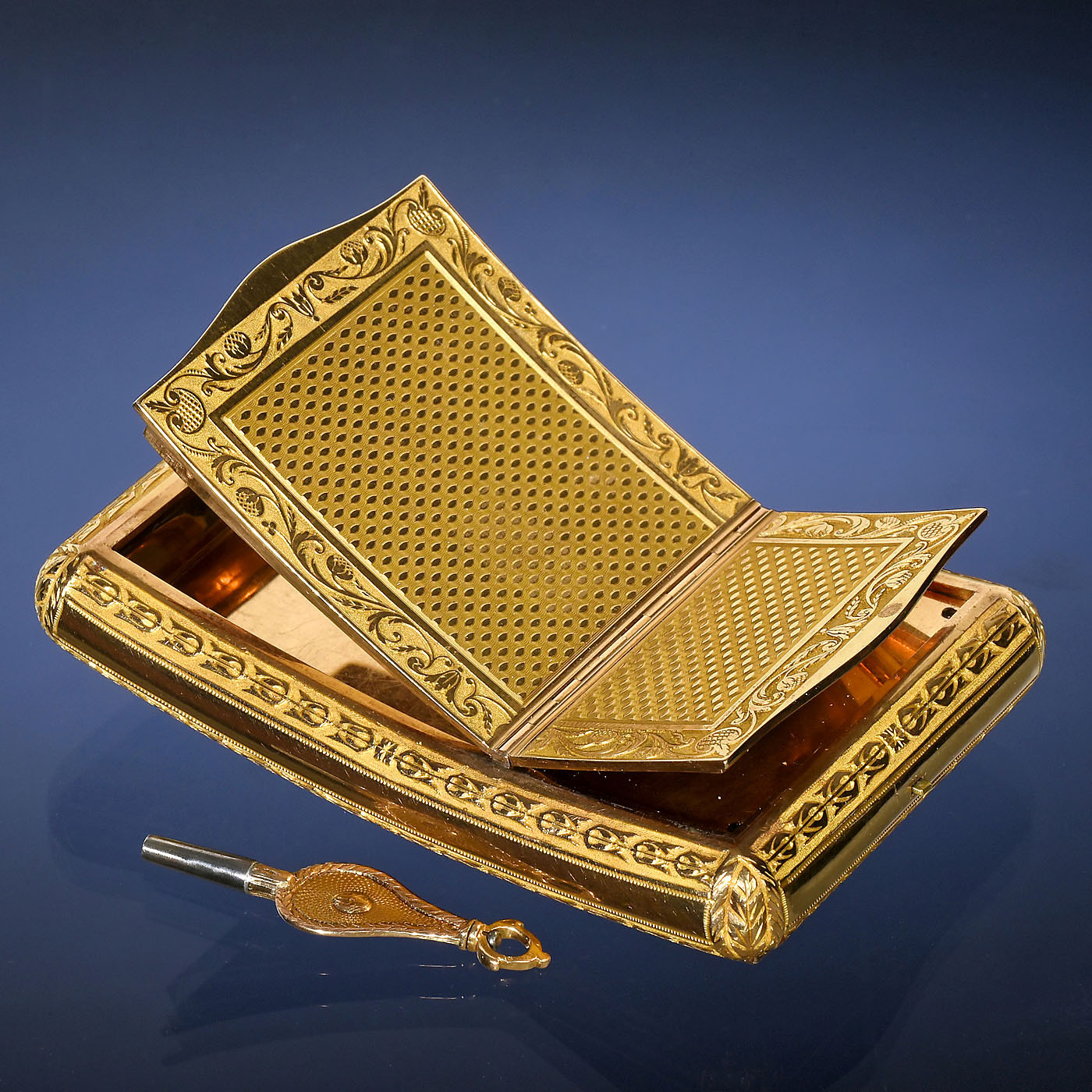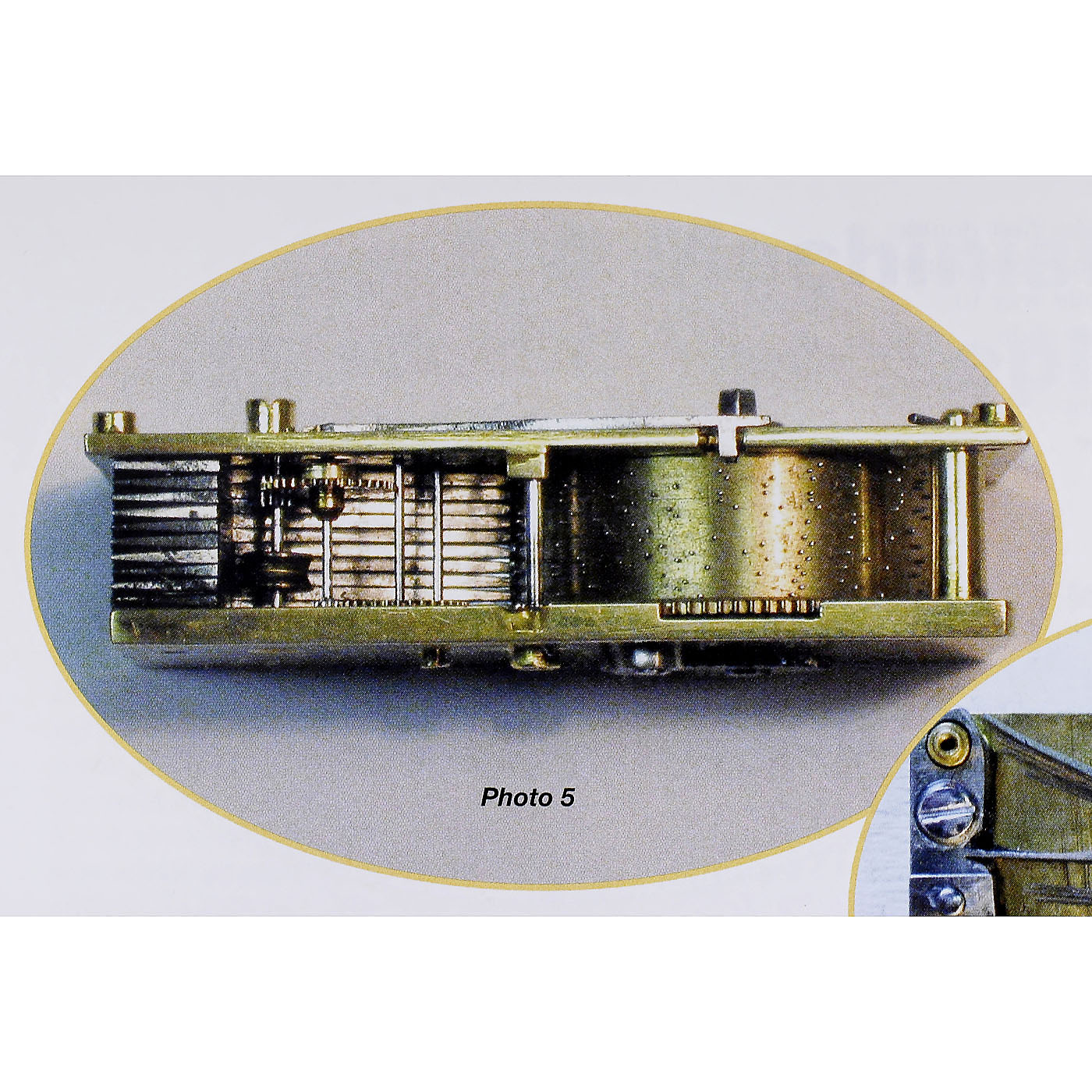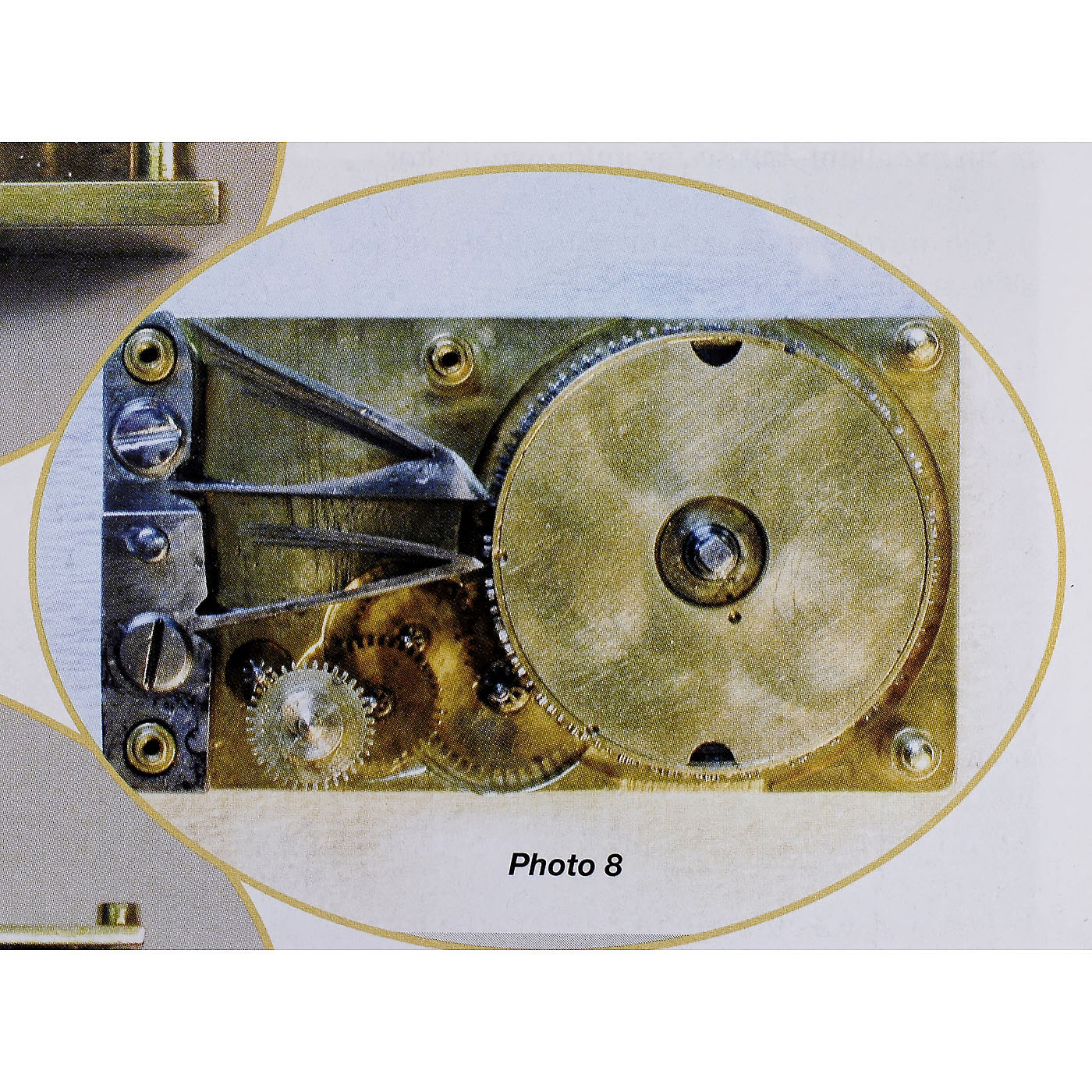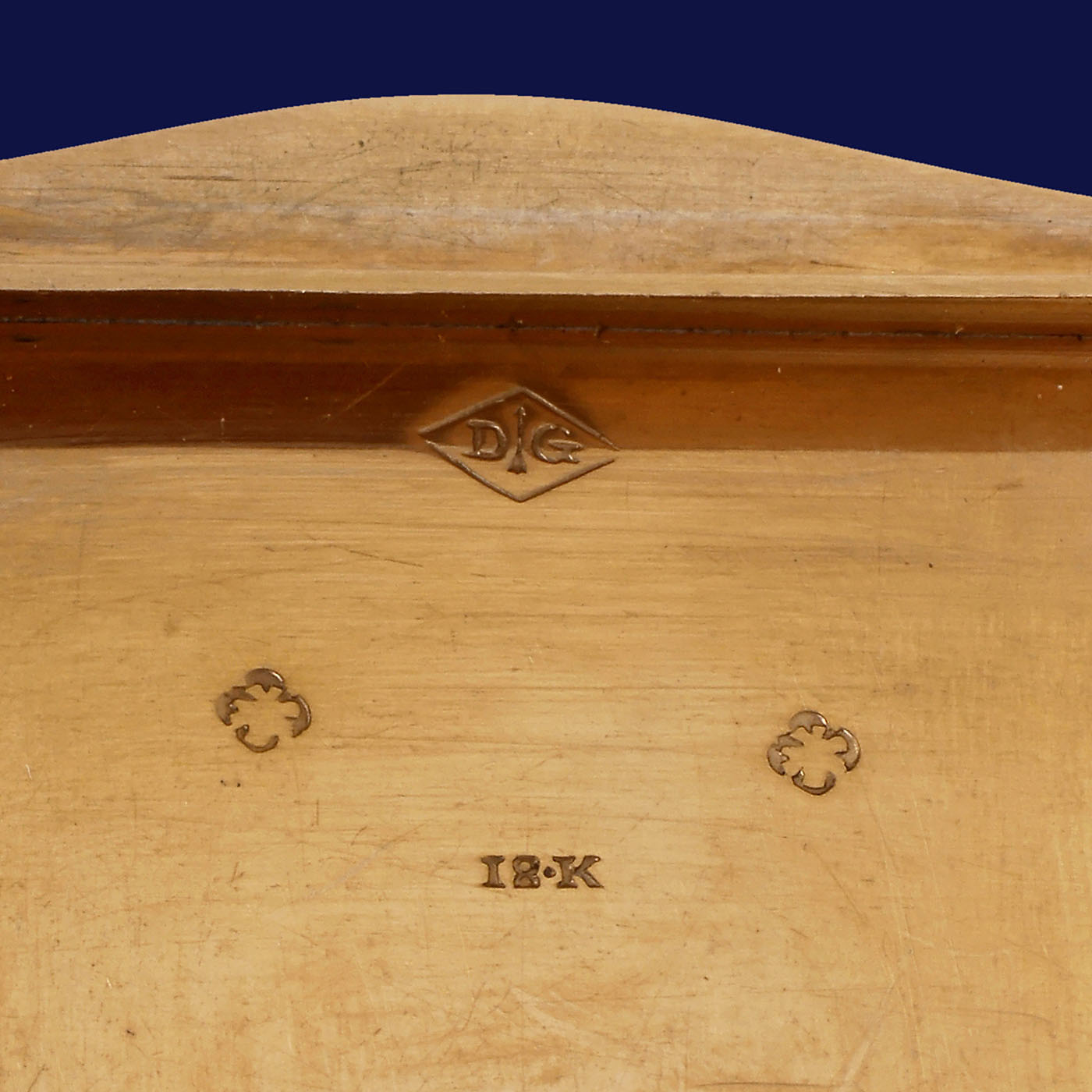



No. 203, with five-pillared barillet movement playing a single air, pinned spring-barrel inscribed "96", spring signed and dated "Carrisot 9/12", two stacks of nine and ten double 'grasshopper' teeth, curved gold case with engine-turned panels, chased and engraved borders, two compartments (one for the mechanism, the other for snuff or the key) with flaps and polished interior stamped "DG" in a diamond, "18K" and two clover symbols, 3 3/8 x 2 1/8 in. (8,5 x 5,4 cm), fine restored playing condition. With key. - Literature: For Niko Wiegman's detailed photographs of the movement during restoration, see Luuk Goldhoorn, "A Musical Snuff Box of Exceptional Form" in: "Mechanical Music" (MBSI), vol. 58, no. 5, September/October 2012, pp. 19-22. - Describing the unusual case design, Goldhoorn notes, "the slight curve … was specifically made to rest in a pocket, to fit snugly against the curvature of the body". Carrisot was a maker of springs active during the late 18th and early 19th century, dating the example offered here, Goldhoorn argues, to a period ten years after the first musical ring by Piguet et Capt came onto the market. - An exhibition piece and objet de vertu from the earliest days of the musical box.

